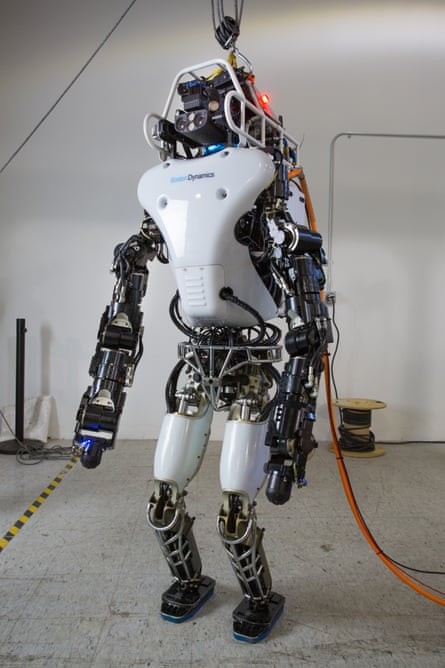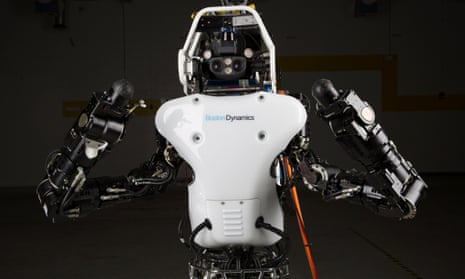Google’s new version of its US defence-developed 6ft 2in, 25st Atlas humanoid robot can now operate for up to an hour without wires.
The Atlas robot was developed by Google-owned Boston Dynamics with the US Defense Advanced Research Projects Agency for its robotics challenge, designed to negotiate rough, outdoor terrain in a bipedal manner, while being able to climb using hands and feet as a human would.
The first version, released in July 2013, required an electrical and control tether to power and operate the robot. The new generation of the robot, dubbed “Atlas unplugged” as it can operate on battery power and be controlled wirelessly, has been developed for the Darpa Robotics Challenge finals, which are set to take place in June.
Each of the seven Atlas teams in the DRCwere given a new robot, 75% of which has been upgraded from previous units making it stronger, more powerful and more dextrous.
The original pump that drove the pneumatic movements of the robot that required the operator to wear ear protection has also been replaced to make it much quieter.
The teams are set a number of challenges within a real-world disaster scenario to overcome, and have to balance power with longevity through software and programming.
“The introduction of a battery and variable-pressure pump into Atlas poses a strategic challenge for teams,” said Pratt. “The operator will be able to run on a mid-pressure setting for most operations to save power, and then apply bursts of maximum pressure when additional force is needed. The teams are going to have to game out the right balance of force and battery life to complete the course.”

The battery pack within the new Atlas robot should last for around one hour of “mixed mission operation”, which includes walking around, standing and using tools and performing tasks at the Fairplex site in Pomona, California.
Each team is competing for a top prize of $2m (£1.3m) with a $1m and $500,000 prize for runners up.
“During periodic reviews with the DRC teams we’re already seeing them perform at a much higher level than they were last year. We’re excited to see how much further they can push the technology,” said Pratt.
The competition is designed to develop the Atlas robot as a platform for useful assistance in disaster scenarios, entering dangerous situations where humans should not or cannot operate. Robots have proved useful in the Fukushima nuclear disaster site, although most operating in real-world sites currently are limited by their relatively simple tank-track design.

Comments (…)
Sign in or create your Guardian account to join the discussion